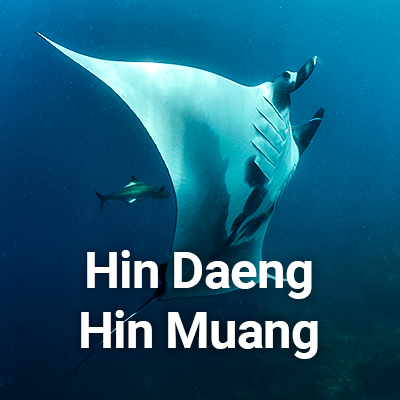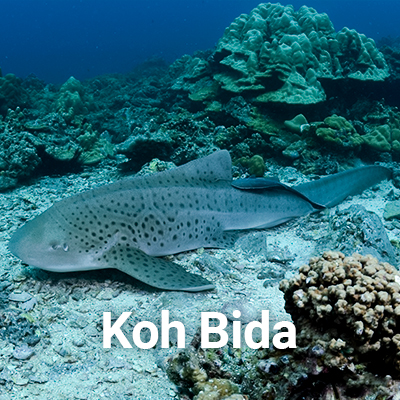Koh Haa
Koh Haa is one of the best scuba diving spots in Thailand. Located within the Koh Lanta Marine Park (Koh Mu National Park), Andaman Sea, Krabi Province. And it is undoubtedly one of the diving destinations that you cannot miss if you visit Thailand.
Diving in Koh Haa is excellent, especially for those who are new to the world of diving and snorkeling. Its shallow interior lagoon with turquoise waters is the ideal setting to have a first contact with the underwater world (Discover Scuba Diving), or for the first dives of the PADI Open Water Diver course.
In addition to the lagoon, Koh Haa offers more than 12 different dives for both beginners and more experienced divers, from the imposing caves of “The Cathedral”, two medium-sized caves with a dome filled with air and connected to each other, passing through vast expanses of coral that will delight macro lovers, and many rock formations that offer pinnacles, caves, chimneys, and swim-throughs to explore.
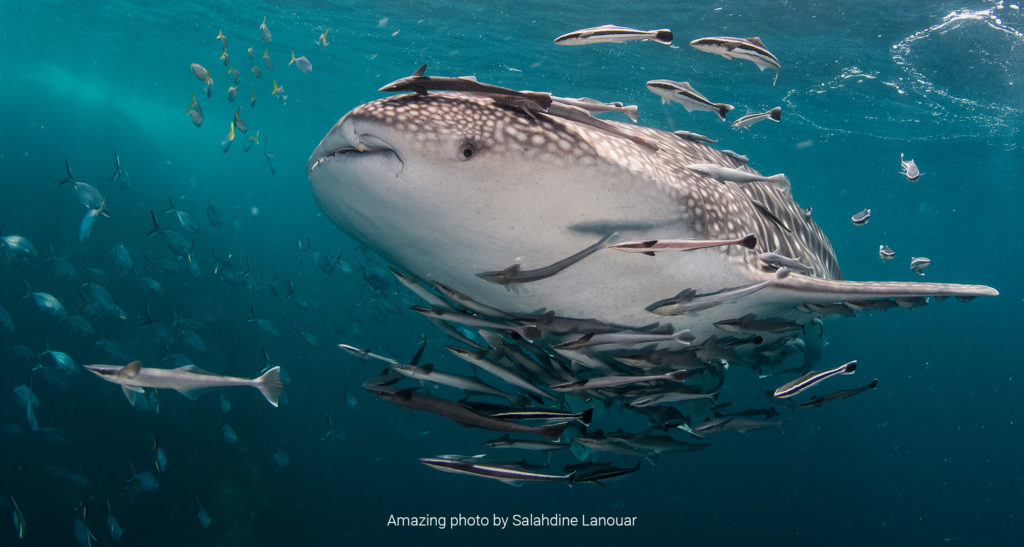
Koh Haa has visibility conditions of up to 30m and a depth range between 3 and 35 meters. This archipelago is located to the west of Koh Lanta Yai island, and it takes 35 minutes to reach it on our speedboat, or 2 hours on most large dive boats.
“Koh Haa” means “Five Islands” in Thai, but actually there are six. There is an island that is so tiny that many people don´t even consider it an island itself, but part of the island Koh Haa Yai, the largest of all.
About marine life, in Koh Haa is common to see whale sharks throughout the year, especially during the high season months; from November to April. Other common inhabitants that you can find in Koh Haa are Hawksbill turtles, reef rays, blacktip sharks, various species of boxfish, clownfish, parrotfish, pufferfish, large moray eels, and huge schools of barracudas and trevallies.
Koh Haa Dive Sites
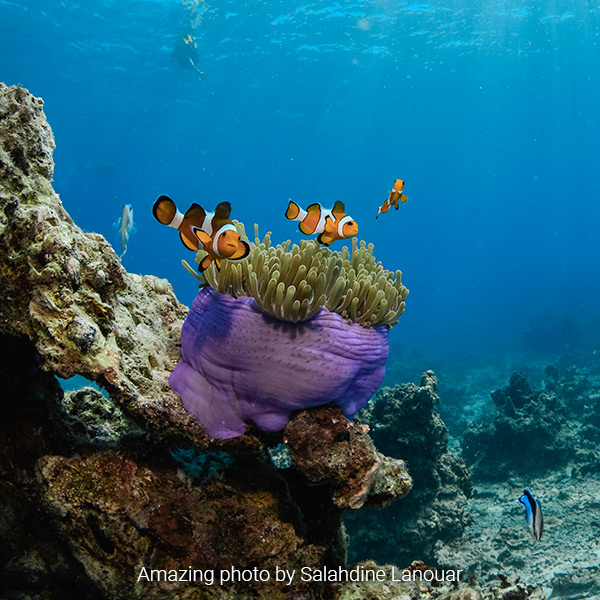
- Suitable for all diving levels.
- One of the best spots.
Koh Haa Lagoon
Koh Haa Lagoon, with its incredible turquoise waters, stunning visibility, and pristine coral reef, is one of the most popular dive spots among macro-loving divers and snorkeling groups.
The lagoon is the inner space created by 3 of the Koh Haa islands. The Koh Haa Lagoon has crystal clear waters with a shallow coral reef, which is one of the best snorkeling spots in all of Thailand. It also has plenty of fine white sand areas, that are perfect for beginner divers, practice underwater exercises, and make the safety stop once the dive is over.
At the edges of the lagoon, the waters slope down and are dotted with rock formations teeming with life. In this area it´s common to find the friendly garden eels, Hawksbill turtles, blue-dotted rays, moray eels, nudibranchs, and if you’re lucky, a guitar shark.
Also, Koh Haa Lagoon has a small white sand beach where you can rest while snorkeling, a stop in your little piece of paradise to regain strength and continue enjoying one of the most beautiful places in Koh Lanta and Krabi.
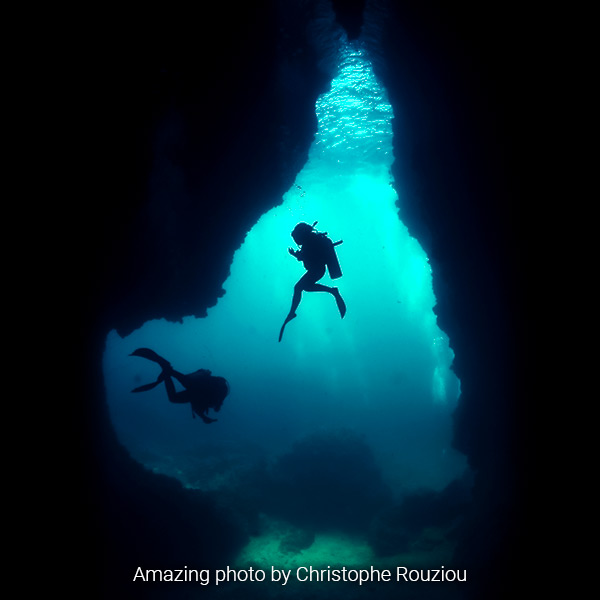
- Suitable for all diving levels.
- Yes, and so good.
Koh Haa Yai
Koh Haa Yai is the largest island of the Koh Haa islands. Also known among divers as “The Cathedral”, for the three caves located in its southern part. The chambers of the two largest caves are dome-shaped and are connected by a wide swim-through. The central vault has a large air mass inside, which allows you to enjoy spectacular views; Large limestone formations of stalactites adorn the vault, which is illuminated only by the light that filters through the water entering the cave, allowing us to enjoy turquoise blue and black backlights that will leave you speechless. At the entrances of these caves live several nudibranchs of different species, so if you like these charming invertebrates, you will love this dive.
Apart from the caves, scuba diving in Koh Haa Yai offers several rocky areas heavily populated with corals. This area is known as “The Secret Garden”, where it´s common to find Hawksbill turtles feeding on bubble corals, sea snakes, blacktip sharks, Kuhl’s stingrays, and countless species of colorful reef fish.
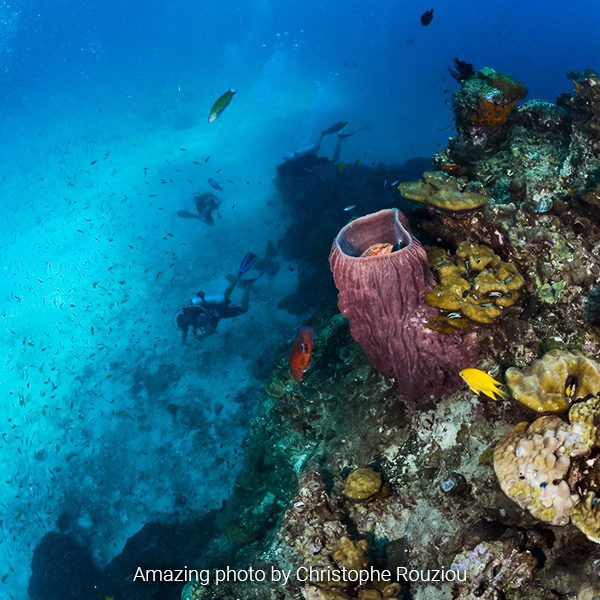
- Suitable for all diving levels.
- Not possible here.
Koh Haa 1
Koh Haa 1 offers great doses of fun for both beginner and advanced divers. This small island has two dives, one on its north face, and one on its south face, but both end at its most famous point; “The Chimney”, a 13m long rock passageway. Its entrance is located 18m deep, and its exit 5m. It is a perfect place for those who have good buoyancy control, and who like the experience of swimming through a narrow underwater gallery. And, as if this were not enough, there is a tunnel at 8-9m that connects the chimney with a rock cave in the shape of a vault, where shoals of small fish usually take refuge and where it´s easy to find several species of nudibranchs.
In addition to the chimney, the north face dive has a shallow sloping reef perfect for PADI Open Water certified divers, while the south side dive traverses a vertical wall reef filled with caves, passageways, and swim-through arches. It is one of our favorite dives for divers with PADI Advanced Open Water Diver certification or higher.
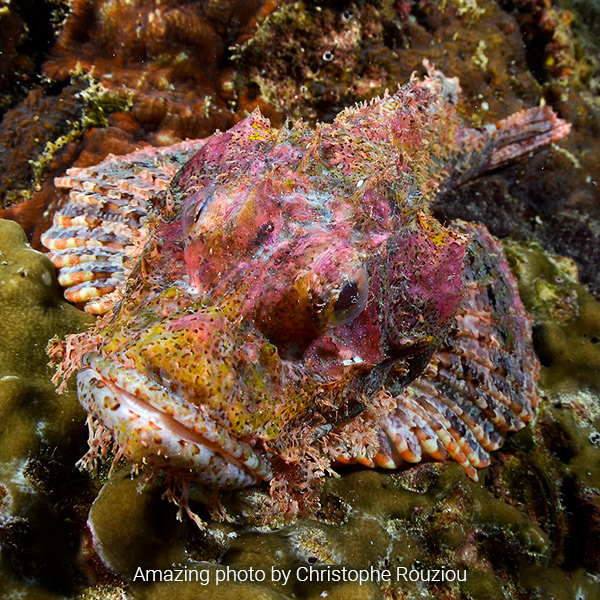
- Suitable for all diving levels.
- Yes, in the lagoon face.
Koh Haa 2
Koh Haa 2 is one of the three islands that make up the Koh Haa Lagoon. It has two faces, one that looks towards the lagoon, where it´s common to find moray eels of various species lurking between the rocky pinnacles full of corals, and another face that faces the sea, where the bottom slopes down, and we will find one of the most varied and lively coral reefs in all of Ko Lanta. In it, you will find large schools of trevallies and chevron barracudas, various types of reef groupers, Kuhl’s stingrays in the sandy areas, massive hundred-year-old bell corals, green and hawksbill turtles feeding on their favorite bubble coral, various species of pufferfish and boxfish, and a host of species of invertebrates, nudibranchs, and flatworms of all kinds.
It is possible to circumnavigate Koh Haa 2 in a single dive. Keep an eye out for the ocean side, as whale sharks are common foraging near the reef. Koh Haa is amazing for scuba diving, and this is a beautiful dive.
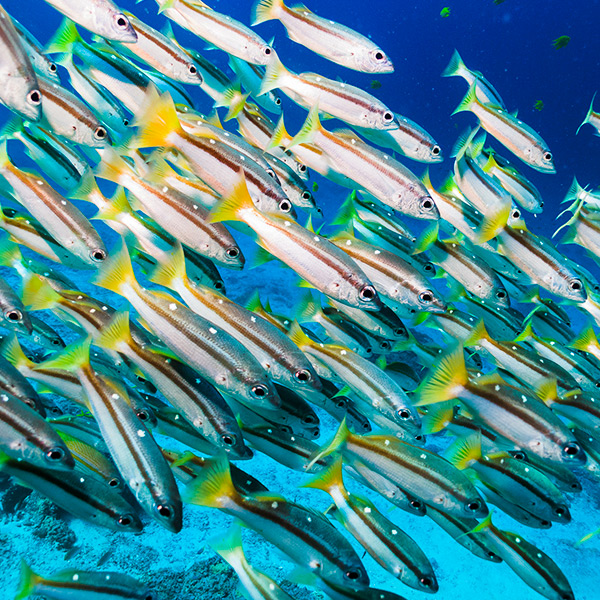
- Suitable for all diving levels.
- Yes, and very popular.
Koh Haa 3
Koh Haa 3 is the largest of the three islands that make up the inner lagoon. The area that looks at the lagoon (east side) is the most famous and picturesque of Koh Haa. It houses a small beach of fine white sand, with a shallow reef in front, which gives the lagoon its characteristic turquoise color and makes it the most photographed place on Koh Haa.
It is one of the best snorkeling spots in Koh Haa and Thailand. On the reef, you can find many different species of coral, large moray eels, different species of clownfish, parrotfish, damsels, cleaners, turtles, starfish, and it is also common to find small specimens of blacktip shark patrolling the bay.
Regarding scuba diving, it´s the perfect place to learn how to dive, since it is shallow, with very good visibility, and this area is usually protected from most currents. It is also the perfect place to end a dive, enjoying the large banks of chevron barracuda in the area, which usually protect from the sun under our speedboat.
The other side of the island, the one facing the open sea (west zone), has a rocky bottom with a slope that drops to a depth of 25m. This side is also excellent for snorkeling, although less spectacular than its east side. If you do this dive, you should be very attentive, keeping one eye on the reef, and the other on the blue, as it is one of the key places to spot whale sharks during high season. Also, in this dive, it is common to find the great barracuda, reef groupers, a large number of anemones with their colonies of clownfish, parrotfish, boxfish, and large schools of trevallies and snappers.
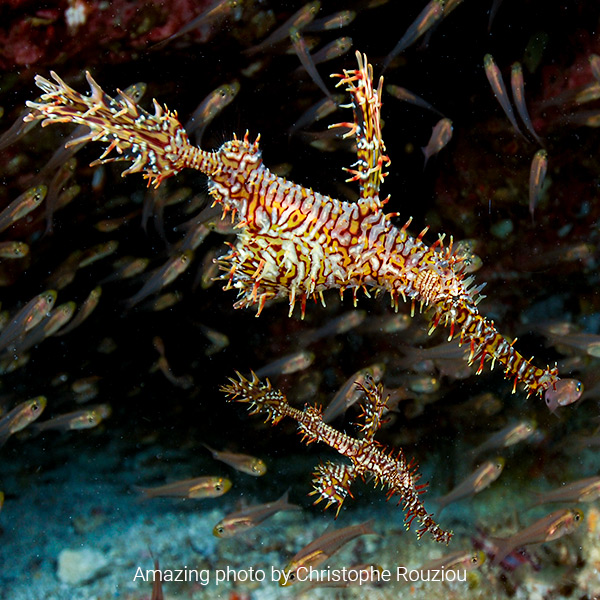
- Suitable for all diving levels.
- Yes.
Koh Haa 4
Koh Haa 4 is another of the three islands that make up the Koh Haa lagoon, and therefore also has two very different faces or diving areas.
The area that faces the lagoon is shallow, with sandy soil with many rock formations abundantly populated with hard and soft corals. It is a perfect area to learn to dive, as it is shallow and well protected from currents.
The area that faces the open sea has a rocky wall in its upper part and a sandy bottom that descends rapidly to a depth of 30m. The rock formations make many small caves that are home to large numbers of crustaceans, nudibranchs, gobies, and small rockfish. That is why this dive site is highly appreciated by divers interested in macro photography.
It is also common to find hawksbill turtles feeding on bubble coral and schools of predators, such as trevallies, stalking the clouds of tiny minnows.
On the sandy bottom, you can find a population of shy garden eels, which hunt for food in stream areas, and will quickly hide if you make sudden movements or get too close.

- Suitable for all diving levels.
- Yes.
Koh Haa 6
Koh Haa 6 is such a tiny island that many don´t even consider it an island itself, but a part of Koh Haa Yai, since it is very close to this island, and they are connected underwater. Hence the name of this archipelago is “Koh Haa” (five islands, in Thai) and not “Koh Hok” (six islands).
This dive site is highly appreciated by underwater photography lovers, given the large amount of macro life that its rocks harbor. The island is shaped like a triangular pinnacle, with a base much wider than its upper tip, and features a large number of invertebrates living among its corals, such as the colorful nudibranchs, cleaner shrimp of various species, the spectacular mantis shrimp, and sea urchins.
The stone tongue that connects the two islands has approximately 12m, where you will find a very lush coral reef populated by all kinds of reef creatures. Here you can find the elusive ghost pipefish, which is very difficult to spot due to its cool camouflage.
Koh Haa 6 is an excellent window from which to observe the blue, as it is another of the points where we see whale sharks more frequently, so be aware!
Other Dive Sites
Book your dives online
Book your dives online at least one week in advance and get a 10% discount!

In Hidden Depths Diving we firmly believe that an eco-responsible diving model is possible. We strive every day to offer you a different, familiar, environmentally friendly, safe, and fun diving experience. Where you will feel part of a great family of divers who, in addition to enjoying diving, we fight so that future generations can enjoy the same wonders that we dive today.
